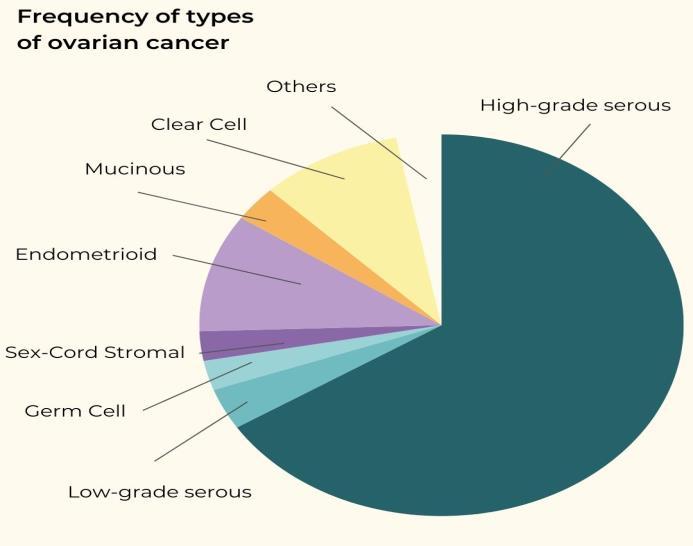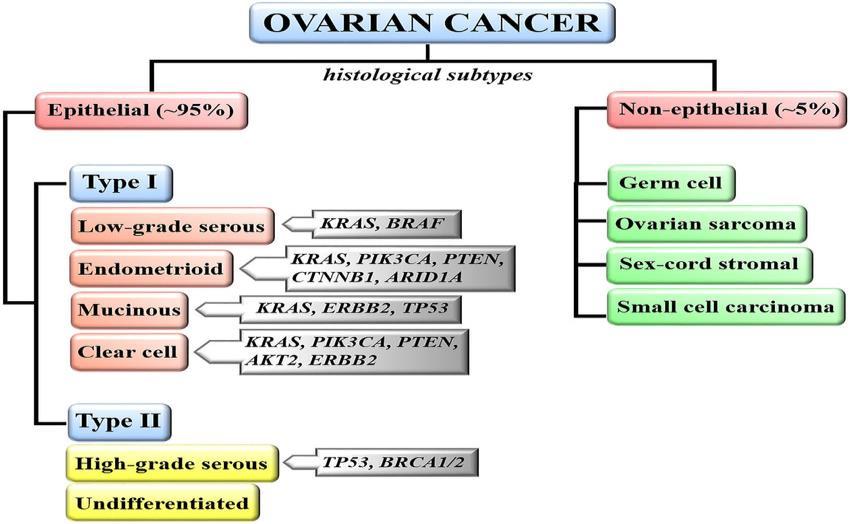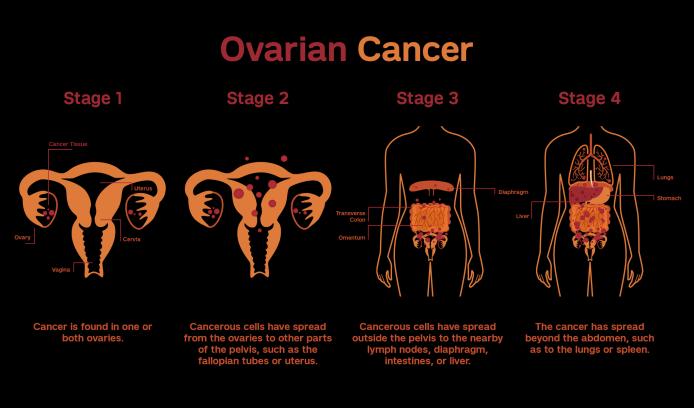
International Research Journal of Engineering and Technology (IRJET) e-ISSN:2395-0056
Volume:11Issue:12|Dec2024 www.irjet.net p-ISSN:2395-0072


International Research Journal of Engineering and Technology (IRJET) e-ISSN:2395-0056
Volume:11Issue:12|Dec2024 www.irjet.net p-ISSN:2395-0072
Samarth Pujari1, Suchitra C Police Patil2 , Sanjana S Dodawad3 , Ruchitha R4
1 Bachelor of Engineering, Information Science and Engineering, Bapuji Institute of Engineering and technology, Karnataka, India
2 Bachelor of Engineering, Information Science and Engineering, Bapuji Institute of Engineering and technology, Karnataka, India
3 Bachelor of Engineering, Information Science and Engineering, Bapuji Institute of Engineering and technology, Karnataka, India
4 Bachelor of Engineering, Information Science and Engineering, Bapuji Institute of Engineering and technology, Karnataka, India ***
Abstract - Cervical cancer remains one of the leading causes of cancer-related deaths among women worldwide, despite being preventable and treatable when detected early. This review highlights the latest advancements in the prevention, diagnosis, and treatment of cervical cancer. Key developments include the widespread implementation of HPV vaccination programs, which have significantly reduced the incidence of high-risk human papillomavirus(HPV)infections. Advances in screening methods, such as liquid-based cytology and HPV DNA testing, have improved early detection rates, particularly in low-resource settings. The paper also explores emerging therapeutic approaches, including targeted therapies, immune checkpoint inhibitors, and personalized medicine. Finally, the role of public health interventions in increasing awareness and accessibilitytopreventivemeasures is discussed. This comprehensive overview underscores the importance of integrating novel scientific advancements with robust public health strategies to further reduce the global burden of cervical cancer.
Key Words: Cervical Cancer, HPV Vaccination, Early Detection, Immunotherapy, Targeted Therapy, Screening Methods. Public Health Strategies, PersonalizedMedicine
Cervicalcancerisoneofthemostpreventableyetprevalent cancers affecting women worldwide. Despite significant advancementsinmedicalscience,itcontinuestoaccountfor a substantial proportion of cancer-related morbidity and mortality,especiallyinlow- andmiddle-incomecountries. Thediseaseprimarilyarisesfrompersistentinfectionwith high-risktypesofhumanpapillomavirus(HPV),whichare strongly associated with cellular transformation and tumorigenesisinthecervicalepithelium.
Over the past few decades, innovative strategies for prevention and early detection have transformed the landscape of cervical cancer management. Widespread adoption of HPV vaccination programs has significantly reduced the prevalence of high-risk HPV infections,
particularly in younger populations. Simultaneously, advances in screening technologies, such as liquid-based cytology and HPV DNA testing, have enhanced early detectioncapabilities,enablingbettertreatmentoutcomes.
However, disparities in access to these technologies and preventive measures remain a significant challenge, particularlyinresource-limitedsettings.Theemergenceof noveltherapeuticapproaches,includingimmunecheckpoint inhibitors,molecular-targetedtherapies,andpersonalized medicine,hasopenednewavenuesfortreatingadvancedstageandrecurrentcervicalcancer.
This paper explores the current trends and recent advancementsincervicalcancerprevention,diagnosis,and treatment. By examining the integration of cutting-edge medicaltechnologieswithpublichealthinitiatives,weaimto provide a comprehensive understanding of strategies to reducetheglobalburdenofcervicalcancer.

Fig-1:Relativefrequenciesofovariancarcinomasubtypes
Cervical cancer represents a significant global health challenge, being the fourth most common cancer among

International Research Journal of Engineering and Technology (IRJET) e-ISSN:2395-0056
Volume:11Issue:12|Dec2024 www.irjet.net
women. The World Health Organization (WHO) estimates that over 600,000 new cases and 340,000 deaths occur annually, with the majority concentrated in developing countries. This disparity underscores the urgent need for equitable access to preventive and diagnostic resources. Persistent infection with high-risk human papillomavirus (HPV), particularly types 16 and 18, is the primary etiologicalfactor,accountingfornearly99%ofallcervical cancercases.
The natural progression of cervical cancer from a precancerous lesion to invasive disease provides a critical windowforpreventionand earlyintervention.Preventive measures, such as HPV vaccination, have been proven to drasticallyreducetheincidenceofhigh-riskHPVinfections and associated cervical lesions. Despite this, vaccination coverageremainsinconsistentglobally,largelyduetosocioeconomic,cultural,andlogisticalbarriers.
Advancementsinscreeningtechniques,includingtheuseof HPV DNA testing and liquid-based cytology, have significantlyimprovedearlydetectionrates.Thesemethods have demonstrated higher sensitivity and specificity comparedtotraditionalPapsmeartests,particularlywhen combined with risk-based algorithms. New screening strategies are also emerging, including self-sampling kits, whichholdpromiseforreachingunderservedpopulations.
For cases diagnosed at later stages, treatment remains a challenge.Whilestandardapproacheslikesurgery,radiation, andchemotherapyhaveimprovedsurvival rates, they are often associated with significant side effects and limited efficacy in advanced or recurrent disease. Recent breakthroughsinimmunotherapy,targetedtherapies,and the integration of artificial intelligence in diagnosis and treatment planning are paving the way for more effective andindividualizedcare.
This paper aims to review the current trends and recent advancementsincervicalcancerresearchandmanagement. Byaddressinggapsinprevention,diagnosis,andtreatment, it provides insights into how emerging technologies and public health strategies can converge to achieve global cervicalcancereliminationgoals.
Theexistingbodyofresearchoncervicalcancerunderscores the significant advancements made in understanding its etiology,prevention,andtreatment.Thissectionreviewskey studiesandfindingsthathaveshapedthecurrenttrendsand approachesincervicalcancermanagement.
Zur Hausen (2009) established the critical link between humanpapillomavirus(HPV)infectionandcervicalcancer. High-risk HPV types, especially HPV-16 and HPV-18, are
p-ISSN:2395-0072
responsiblefornearly70%ofallcases.Thisdiscoveryhas informed the development of preventive vaccines and diagnostictools.
Torre et al. (2015) identified additional risk factors, including early sexual activity, multiple sexual partners, smoking, and immunosuppression, which increase the susceptibilitytopersistentHPVinfectionsandsubsequent cancerprogression.
Harper et al. (2006) conducted pivotal clinical trials demonstratingtheefficacyoftheHPVvaccinesGardasiland CervarixinpreventinginfectionswithHPVtypes16and18. Thesevaccineshavesincebeenwidelyadopted,withrealworldstudiesshowingareductionincervicalprecancerous lesions.
Droletetal.(2019)reviewedglobalvaccinationprograms, highlighting significant declines in HPV prevalence and cervical abnormalities in regions with high vaccination coverage. However, the study noted disparities in implementation,particularlyinlow-incomecountries.
Cuzick et al. (2008) compared traditional Pap smear screeningwithHPVDNAtesting,findingthatthelatteroffers highersensitivityindetectingprecancerouslesions.Thishas ledtotheintegrationofHPVDNAtestingincervicalcancer screeningguidelines.
Arbynetal.(2018)exploredself-samplingmethodsforHPV testing, emphasizing their potential to improve screening ratesinunderservedpopulationsbyovercomingbarriersto clinic-basedtesting.
Tewari et al. (2014) demonstrated the effectiveness of addingbevacizumab,ananti-angiogenicagent,tostandard chemotherapyinimprovingsurvivalforadvancedcervical cancerpatients.
Reedetal.(2018)reviewedtheuseofimmunecheckpoint inhibitorslikepembrolizumab,showingpromiseintreating recurrent or metastatic cervical cancer. These therapies enhancetheimmunesystem'sabilitytotargetanddestroy cancercells.
Canfell et al. (2016) emphasized the role of organized screening and vaccination programs in reducing cervical cancerincidenceandmortality.Countrieswithrobustpublic healthinitiatives,suchasAustralia,areontracktoeliminate cervicalcancerasapublichealthproblem.

International Research Journal of Engineering and Technology (IRJET) e-ISSN:2395-0056
Volume:11Issue:12|Dec2024 www.irjet.net p-ISSN:2395-0072
WHO (2020) launched the Global Strategy for Cervical CancerElimination,aimingtoachieve90%HPVvaccination coverage, 70% screening coverage, and 90% access to treatmentforpre-cancerandinvasivecancerby2030.
Studieshighlightchallengessuchasvaccinehesitancy,lack ofawareness,andinfrastructurallimitationsinlow-resource settings. Research by Ginsburg et al. (2017) calls for innovativefinancingandpartnershipstoensure equitable accesstopreventionandtreatmentservices.
Emergingtechnologies,includingartificialintelligence(AI) for diagnostic imaging and molecular profiling, are being explored to enhance early detection and develop personalizedtreatmentstrategies.
Cervical cancer research has seen remarkable advancements in understanding its etiology, prevention, diagnosis, and treatment, alongside the development of impactfulpublichealthstrategies.Persistentinfectionwith high-riskhumanpapillomavirus(HPV),particularlyHPV-16 andHPV-18,istheprimarycauseofcervicalcancer.Studies have identified other risk factors, includingsmoking,early sexual activity, multiple sexual partners, and immunosuppression, whichincrease thelikelihood ofHPV infection progressing to cancer. These findings have been pivotal in designing prevention and screening programs worldwide.
One of the most significant advancements in cervical cancer prevention has been the development of HPV vaccines,suchasGardasilandCervarix.Thesevaccineshave demonstratedhighefficacyinreducingHPVinfectionsand precancerous cervical lesions, with substantial success in regionswithrobustvaccinationprograms.However,global implementationremainsuneven,especiallyinlow-resource settings,duetochallengessuchasvaccinehesitancy,lackof awareness, and logistical barriers. Addressing these disparities iscritical toachieving universal cervical cancer prevention.
Intherealmofscreeninganddiagnosis,HPVDNAtesting has emerged as a superior alternative to traditional Pap smears,offeringhighersensitivityandspecificityindetecting precancerous lesions. Advances in screening technologies, such as liquid-based cytology and AI-assisted diagnostics, have further improved accuracy and accessibility. Selfsampling techniqueshavealsoshown promise in reaching underserved populations, empowering women in remote areastoparticipateinscreeningprograms.Theseinnovations are vital in overcoming barriers to early detection, which remainsacornerstoneofcervicalcancercontrol.
Treatmentapproachesforcervicalcancerhaveevolved significantly,particularlyforadvancedandrecurrentcases. While traditional methodssuchassurgery,chemotherapy, and radiation remain central to treatment, emerging therapies are transforming outcomes for patients with aggressive or late-stage disease. Immune checkpoint inhibitors,likepembrolizumab,andtargetedtherapies,such asbevacizumab,haveshownpromiseinimprovingsurvival rates.Additionally,ongoingresearchintomolecularprofiling and personalized medicine aims to tailor treatments to individualpatients,maximizingefficacyandminimizingside effects.
Public health strategies have played a crucial role in reducingcervicalcancerincidenceandmortality.Organized vaccinationandscreeningprogramsinhigh-resourcesettings haveledtoasignificantdeclineincases,withsomecountries, likeAustralia,ontracktoeliminatecervicalcancerasapublic health problem. However, disparities in access to these programsremainasignificantchallenge,particularlyinlowand middle-income countries. The World Health Organization’s (WHO) Global Strategy for Cervical Cancer Elimination aims to address these challenges by setting ambitioustargetsforvaccination,screening,andtreatment by2030.
Despite these advancements, several challenges persist, including socio-economic disparities, limited healthcare infrastructure, and vaccine hesitancy. Future research is focused on enhancing early detection technologies, expanding access to preventive measures, and developing novel therapeutic approaches. The integration of scientific innovationwithrobustpublichealthinitiativesisessentialto achieving equitable cervical cancer control. As efforts continue, interdisciplinary collaboration will be key to overcomingbarriersandadvancingtowardthegoalofglobal cervicalcancerelimination.
Themethodologyforstudyingcervicalcancertrendsand advancementsinvolvesamulti-facetedapproach,combining epidemiologicalresearch,clinicalstudies,molecularbiology, and public health interventions. This comprehensive approach aims to address the etiology, prevention, early detection,andtreatmentofcervicalcancer.
Epidemiological studies focus on understanding the prevalence, incidence, and risk factors associated with cervicalcancer.Thesestudiesinvolveanalyzingpopulationleveldatatoidentifypatternsandtrendsincervicalcancer occurrence. National cancer registries, global health databases like the WHO and GLOBOCAN, and longitudinal cohort studies are used to examine factors such as HPV prevalence,socio-demographicdisparities,andtheimpactof vaccinationandscreeningprograms.

International Research Journal of Engineering and Technology (IRJET) e-ISSN:2395-0056
Volume:11Issue:12|Dec2024 www.irjet.net p-ISSN:2395-0072

Fig-2:Differenttypesandsub-typesofepithelialovarian carcinoma
Clinical research evaluates the efficacy and safety of cervicalcancerinterventions,includingvaccines,screening methods, and therapeutic treatments. Randomized controlled trials (RCTs) and observational studies are conductedtoassessadvancementslikeHPVvaccines,liquidbased cytology, HPV DNA testing, and immunotherapies. Comparativestudiesbetweentraditionalmethods,suchas Papsmears,andnewertechnologies,suchasself-sampling kits, provide insights into their effectiveness in different settings.
Molecularstudiesinvestigatethegeneticandmolecular mechanisms underlying cervical cancer development. Techniques like next-generation sequencing (NGS), gene expression profiling, and proteomics are used to identify biomarkers and mutations associated with high-risk HPV types. These findings inform the development of targeted therapies and personalized treatment approaches, enhancingtheprecisionofcervicalcancermanagement.
Themethodologyfordevelopingandassessingscreening tools involves both laboratory-based and field-testing phases.HPVDNAtests,liquid-basedcytology,andAI-driven diagnostic tools are tested for sensitivity, specificity, and feasibility in various populations. Pilot programs and implementation studies evaluate the real-world effectivenessofself-samplingkitsandrisk-basedscreening algorithms,particularlyinlow-resourcesettings.
Publichealthmethodologiesfocusonimplementingand evaluating cervical cancer prevention programs. These include community-based surveys to assess knowledge, attitudes, and practices related to HPV vaccination and cervicalcancerscreening.Operationalresearchevaluatesthe logistics,cost-effectiveness,andsustainabilityofvaccination campaigns and screening initiatives, especially in underservedregions.
Combining data from these methodologies enables a holistic understanding of cervical cancer. Epidemiological findingsguideclinicalresearchpriorities, whilemolecular studiesinformthedevelopmentofdiagnosticsandtherapies. Public health studies bridge the gap between scientific advancements and real-world application, ensuring equitable access to cervical cancer prevention and treatment.
Quantitativeandqualitativeanalysismethodsareusedto interpretthefindings.Statisticaltoolsevaluatetheimpactof interventions on cervical cancer incidence and mortality, while thematic analysis helps understand barriers and facilitatorsinprogramimplementation.Meta-analysesand systematic reviews synthesize evidence from multiple studiestoprovidecomprehensiveinsights.
Thismethodologyaimstoprovidearobustframeworkfor understandingcurrenttrendsandadvancementsincervical cancer research and control, ensuring that scientific innovation translates into meaningful public health outcomes.

Fig-3:Differentstagesofovariancancer
Cervicalcanceristhefourthmostcommoncanceramong womenglobally,withthehighestburdeninlow-andmiddleincome countries due to limited healthcare access. Highincomecountrieshaveseendecliningmortalityratesthanks towidespreadscreeningandHPVvaccination,butdisparities

International Research Journal of Engineering and Technology (IRJET) e-ISSN:2395-0056
Volume:11Issue:12|Dec2024 www.irjet.net p-ISSN:2395-0072
persist. The COVID-19 pandemic disrupted preventive measures, delaying diagnosis and vaccination efforts. Advances in HPV vaccines, targeting high-risk strains like HPV 16 and 18, have significantly reduced cervical cancer incidenceinvaccinatedpopulations.Newvaccinescovering additional strains are improving protection. Scaling up vaccination and screening programs, particularly in underserved areas, is essential to achieve global cervical cancereliminationgoals.
Cervicalcancerremainsamajorglobalhealthconcern,but significant progress has been made in its prevention, diagnosis,andtreatment.Traditionalapproaches,including thePapsmearandsurgery,laidthefoundationformanaging the disease; however, recent advancements have revolutionized its control. The development of the HPV vaccine has proven to be a game-changer in preventing cervical cancer, and the adoption of HPV DNA testing has significantly improved early detection. New treatment options,suchasimmunotherapiesandtargetedtherapies,are providing hope for patients with advanced or recurrent disease.
Despite these advancements, challenges remain, particularly in low-resource settings where access to vaccines,screening,andtreatmentislimited.However,global initiativesliketheWHO’s2030cervicalcancerelimination strategy offer a comprehensive approach to overcoming thesebarriersthroughintegratedvaccination,screening,and treatment efforts. Continued research into early detection methods, personalized therapies, and public health interventions is essential to further reduce the burden of cervicalcancerworldwide.
Inconclusion,thecombinationofscientific innovationand strengthened public health efforts holds the promise of significantlyreducing,ifnoteliminating,cervicalcancerasa global healththreat.However, achievingthisgoal requires continued commitment to equitable healthcare access, education, and the implementation of effective policies globally.
Iextendmysinceregratitudetomyfacultyguide,Hemashree HC,oftheInformationScienceandEngineeringDepartment at Bapuji Institute of Engineering and Technology, for his invaluableguidanceandsupportthroughoutthesuccessful completionofthisproject.IamalsogratefultoDrPoornima B, Head of the Department, for her timelyassistanceand encouragement.Theircontributionshavebeeninstrumental intheachievementofourobjectives.
[1] Arbyn, M., et al. (2020). "Effectiveness and safety of humanpapillomavirus(HPV)vaccination:Asystematic review and meta-analysis of 10 years of real-world data." The Lancet Infectious Diseases, 20(10), 1265–1275.
[2] Sung, H., et al. (2021). "Global cancer statistics 2020: GLOBOCAN estimates of incidence and mortality worldwide for 36 cancers in 185 countries." CA: A Cancer Journal for Clinicians, 71(3),209–249.
[3] MokSC,KwongJ,WelchWR,SamimiG,OzbunL,etal. Etiologyandpathogenesisofepithelialovariancancer. DisMarkers2007;23(5–6):367–376.
[4] Landen CN Jr, Birrer MJ, Sood AK. Early events in the pathogenesis of epithelial ovarian cancer. J Clin Oncol 2008;26(6):995–1005.doi:10.1200/JCO.2006.07.9970.
[5] Tjalma, W., et al. (2019). "Cervical cancer prevention: Stateoftheartandfutureperspectives." Obstetrics and Gynecology International, 2019,1–10.
[6] Tortolero-Luna G, Mitchell MF. The epidemiology of ovariancancer.JCellBiochem1995;59(Suppl23):200–207.doi:10.1002/jcb.240590927.
[7] Rao BR, Slotman BJ. Endocrine factors in common epithelialovariancancer.EndocrRev1991;12(1):14–26.doi:10.1210/edrv-12-1-14.
[8] Risch HA. Hormonal etiology of epithelial ovarian cancer, with a hypothesis concerning the role of androgens and progesterone. J Natl Carcinoma Inst 1998;90(23):1774–1786.doi:10.1093/jnci/90.23.1774.
[9] Canfell,K.,etal.(2020)."Mortalityimpactofachieving WHOcervicalcancereliminationtargets:Acomparative modellinganalysisin78low-incomeandlower-middleincomecountries." The Lancet, 395(10224),591–603.
[10] ChungHC,RosW,DelordJ-P,etal.Efficacyandsafetyof pembrolizumabinpreviouslytreatedadvancedcervical cancer:resultsfromthephaseIIKEYNOTE-158study.J ClinOncol2019;37:1470–8
[11] NaumannRW,HollebecqueA,MeyerT,etal.Safetyand efficacy of nivolumab monotherapy in recurrent or metastaticcervical,vaginal,orvulvarcarcinoma:results from the phase I/II CheckMate 358 trial. J Clin Oncol 2019;37:2825–34
[12] Santin AD, Deng W, Frumovitz M, etal. Phase II evaluationofnivolumabinthetreatmentofpersistent or recurrent cervical cancer (NCT02257528/NRGGY002).GynecolOncol2020;157:161–6

International Research Journal of Engineering and Technology (IRJET) e-ISSN:2395-0056
Volume:11Issue:12|Dec2024 www.irjet.net p-ISSN:2395-0072
[13] Colombo N, Dubot C, Lorusso D, etal. Pembrolizumab forpersistent,recurrent,ormetastaticcervicalcancer.N EnglJMed2021;385:1856–67.
[14] Colombo N, Dubot C, Lorusso D, etal. Pembrolizumab forpersistent,recurrent,ormetastaticcervicalcancer.N EnglJMed2021;385:1856–67.
[15] 1 Lan C, Shen J, Wang Y, etal. Camrelizumab plus apatinib in patients with advanced cervical cancer (CLAP):amulticenter,open-label,single-arm,phaseII trial.JClinOncol2020;38:4095–106.
[16] O'Malley DM, Oaknin A, Monk BJ, etal. LBA34 singleagentantiPD-1balstilimaborincombinationwithantiCTLA-4 zalifrelimab for recurrent/metastatic (r/m) cervical cancer (CC): preliminary results of two independent phase II trials. Annals of Oncology 2020;31:S1164–5.
[17] Miles B, Safran HP, Monk BJ. Therapeutic options for treatmentofhumanpapillomavirus-associatedcancersnovel immunologic vaccines: ADXS11-001. Gynecol OncolResPract2017;4.
[18] MaciagPC,RadulovicS,RothmanJ.Thefirstclinicaluse of a liveattenuated Listeria monocytogenes vaccine: a phase I safety study of Lm-LLO-E7 in patients with advanced carcinoma of the cervix. Vaccine 2009;27:3975–83
[19] 5HuhWK,BradyWE,FracassoPM,etal.PhaseIIstudy of axalimogene filolisbac (ADXS-HPV) for platinumrefractory cervical carcinoma: an NRG Oncology/GynecologicOncologyGroupstudy.Gynecol Oncol2020;158:562–9
[20] Petit RG, Mehta A, Jain M, etal. ADXS11-001 immunotherapytargetingHPV-E7:finalresultsfroma phaseIIstudyinIndianwomenwithrecurrentcervical cancer.JournalforImmunoTherapyofCancer2014;2
[21] VanPoelgeestMIE,ViscontiVV,AghaiZ,etal.Potential use of lymph node-derived HPV-specific T cells for adoptivecelltherapyofcervicalcancer.CancerImmunol Immunother2016;65:1451–63
[22] StevanovićS,DraperLM,LanghanMM,etal.Complete regressionofmetastaticcervicalcanceraftertreatment withhumanpapillomavirus-targetedtumor-infiltrating Tcells.JClinOncol2015;33:1543–50.
[23] StevanovićS,HelmanSR,WunderlichJR,etal.AphaseII study of tumor-infiltrating lymphocyte therapy for humanpapillomavirusassociatedepithelialcancers.Clin CancerRes2019;25:1486–93.41DoranSL,Stevanović S,AdhikaryS,etal.T-cellreceptorgene
[24] Nagarsheth NB, Norberg SM, Sinkoe AL, etal. TCRengineered T cells targeting E7 for patients with metastaticHPV-associatedepithelialcancers.NatMed 2021;27:419–25.
[25] Williamson CW, Sherer MV, Zamarin D, etal. Immunotherapyandradiationtherapysequencing:state of the data on timing, efficacy, and safety. Cancer 2021;127:1553–67